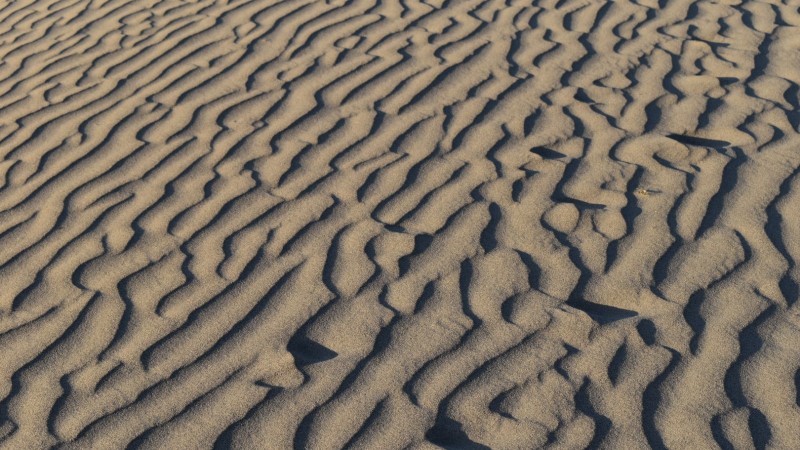When I decided to take the summer off to travel across our great land, I knew one of my first destinations would be the desert southwest.
I needed to get there before it was too hot. It turns out May weather in the desert is 100 degrees, but you can still get by!
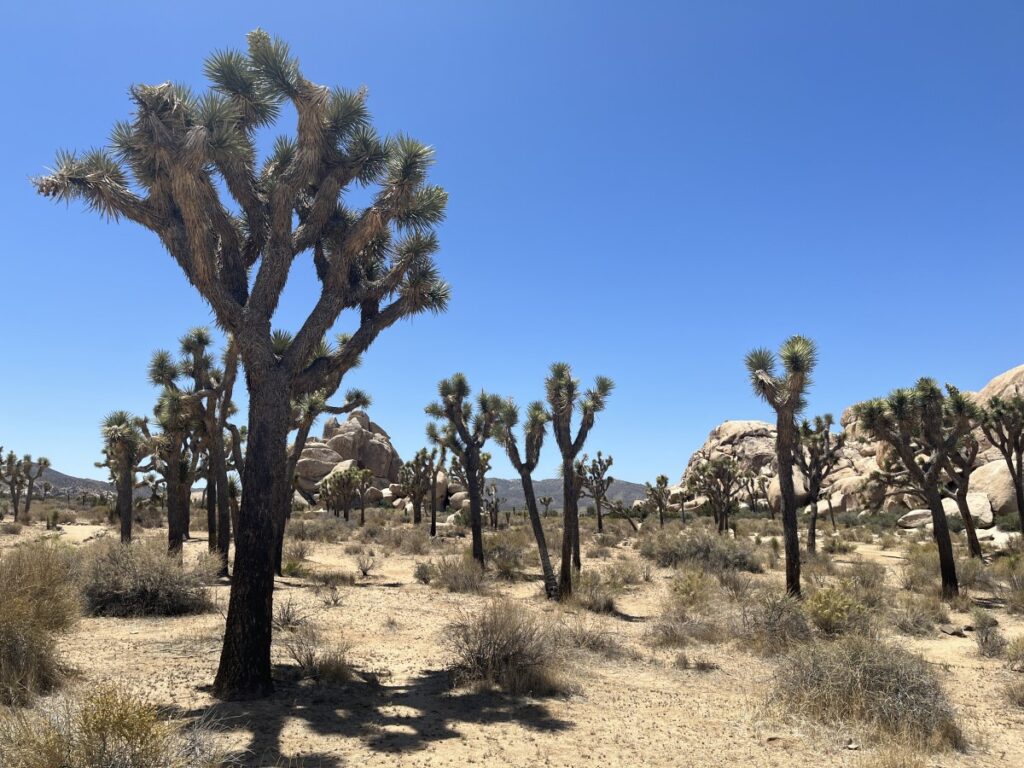
Joshua Tree National Park is east of Los Angeles and very close to Palm Springs, with the Southland’s suburban sprawl coming close to the large park’s southern and northern borders. I-10 travels just south of the park.
After my day at Mount Wilson and Angeles National Forest, I headed to Joshua Tree to stay at Cottonwood Spring Campground, which is not centrally-located in the park but is just a few minutes from the interstate. Arriving at sunset on a Thursday night, the half-full campground was already beautifully silent for the night.
The park is named for Joshua trees but there’s much more to see. Its original proposed name was Desert Plants National Park, and there are plenty of them to see! It’s home to a large field of cholla cacti, and I also saw numerous spring wildflowers as I made the strenuous hike up Mount Ryan.
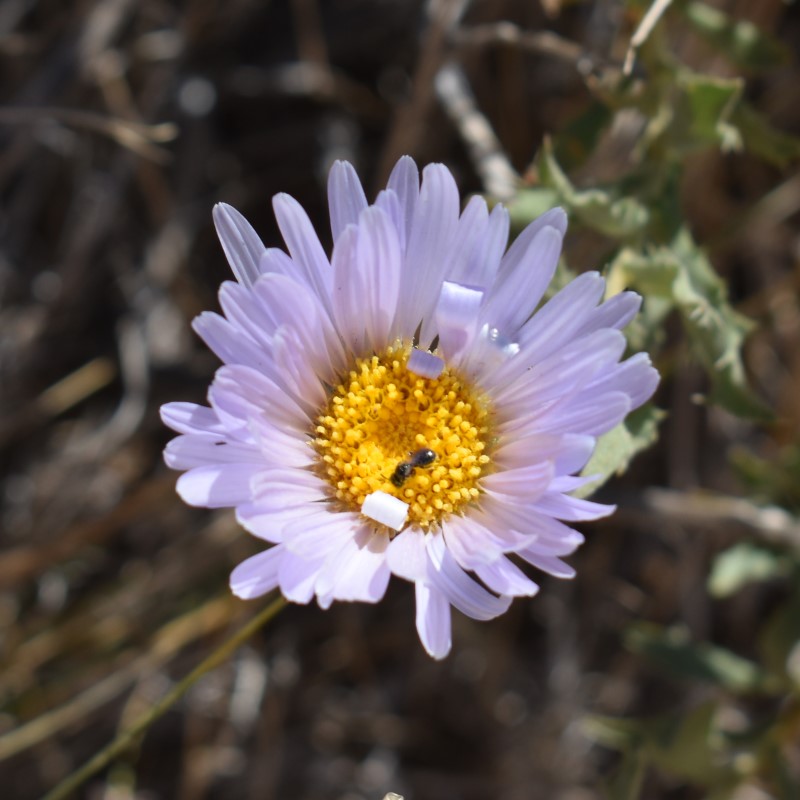
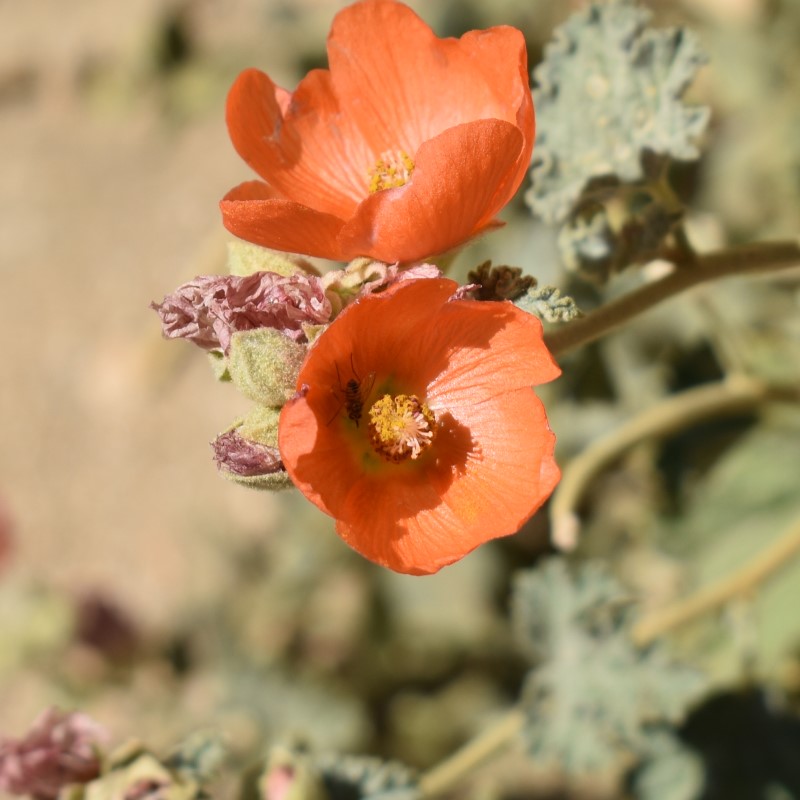

On the radio, there’s interesting listening to plenty of AM radio stations from Mexico.
My second night at Joshua Tree was not as quiet as the first. Friday night brought car after car of late-arriving campers who talked loudly and kept slamming their doors until well after midnight. (Pro tip: You can close your car door without slamming it. Your tent-sleeping neighbors will thank you.)
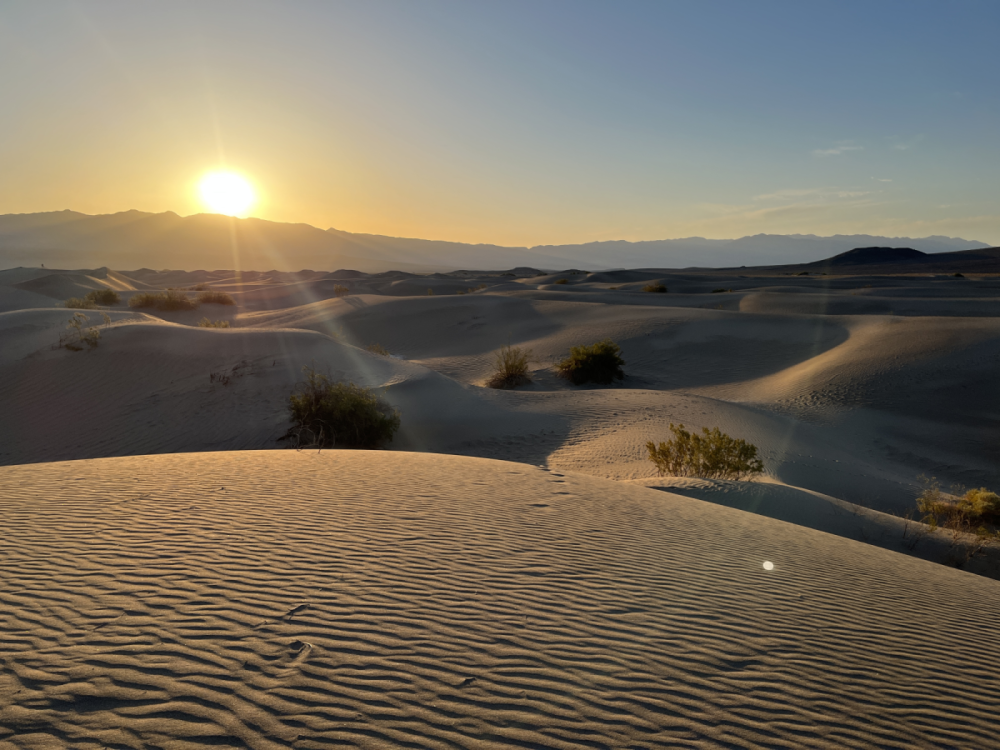
May is already too late for tent camping in Death Valley, the hottest place on the continent, so I’d booked a room at the Stovepipe Wells Motel. I drove in from the west, stopping to take in the area known as “Star Wars Valley” due to its use for military training flights (none when I was there). Terrestrial radio reception in Death Valley is virtually non-existent, so I enjoyed BBC’s “Top of the Pops” via satellite as I drove across the hot valley.
At the motel, it was early to bed because I was going to do something I never do when I stay in a motel: get up really early and leave before sunrise. The temperature rises fast in Death Valley and I was going to make the most of it before it got too hot. Before leaving home, I’d watched a YouTube video by Traveling Robert detailing his trip to Death Valley, so I knew what I wanted to focus on the next day.
By sheer luck, the Mesquite Flat Sand Dunes are only a few miles away from the motel and I managed to be there for a spectacular sunrise!
My trip out to California had taken me up Loveland Pass in Colorado at 11,990 feet above sea level. Now, it was time to head below sea level to Badwater Basin, the lowest point in North America at 282 feet below sea level. You can walk a quick mile from the trailhead out into unusual salt formations that you could easily mistake for another world.

I also managed to hike the Golden Canyon Interpretive Trail before it began to heat up. Determined to survive Death Valley, I cut off hiking when it hit 90, enjoying the scenic Artist Drive, visitors center, and several overlooks as I leisurely made my way around the park. Ubehebe Crater will have to wait for another trip, perhaps after the Scotty’s Castle visitor center and museum has reopened.
Despite the heat, Death Valley still had a lot of tourists. My next stop did not!
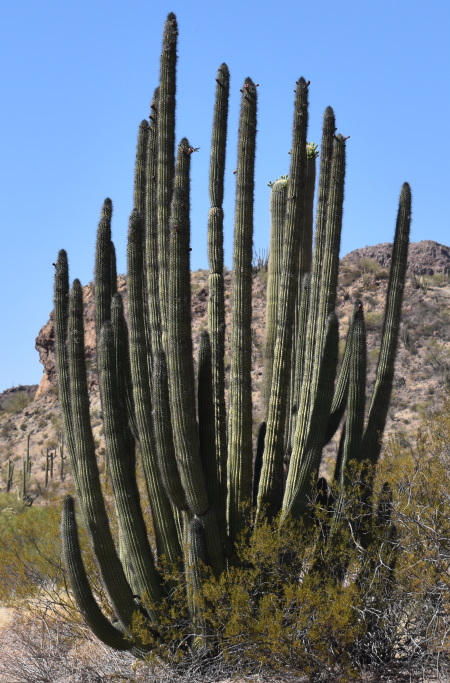
Organ Pipe Cactus National Monument is in southern Arizona along the Mexican border. It’s the only place to see organ pipe cacti, but unfortunately it’s also been in the news for human smuggling and the border wall controversy.

Ominous signs around the park and warnings in brochures advise visitors to be on the lookout for people who might’ve snuck across the border. I saw no evidence of this during my stay. In fact, the only people I saw on my first day in the park were staff at the visitor’s center.
The park is filled not only with organ pipe cacti but saguaros and other desert plants. There’s a nice interpretive scenic drive taking you past all of the plants, but honestly, you can see most of them from your campsite!
The campground at Organ Pipe was a stark contrast from my experience at Joshua Tree. Organ Pipe’s Twin Peaks Campground has more than 200 sites, but from my site, I could not see any other campers. (Apparently it’s a lot more popular during the winter.) I had the whole place to myself, which seemed creepy at first but then became peaceful as the desert night began.
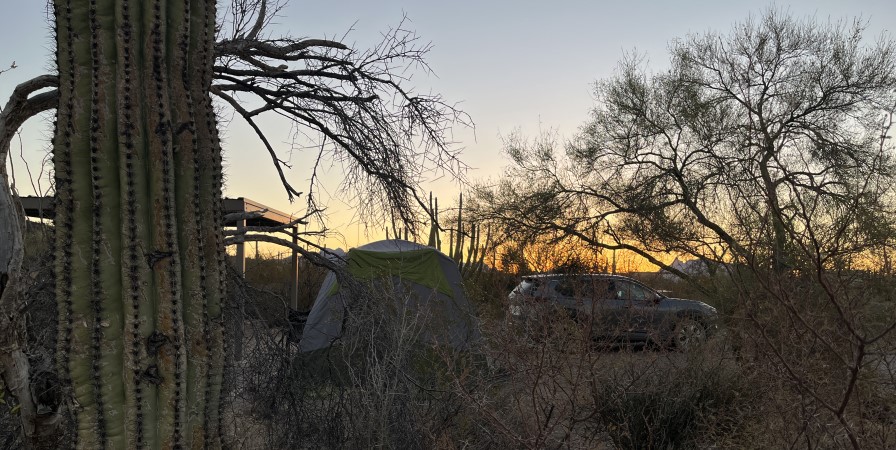
In the morning, I was startled to see someone coming up the road. It turned out to be a woman on her morning run. There was also a trio of morning walkers. Those four, and Border Patrol officers, were the only people I saw in the park my entire second day there.
After Organ Pipe, Saguaro National Park near Tucson felt a bit repetitive. Yes, Saguaro is also great. But if you’ve been to Organ Pipe, you’ve already seen plenty of saguaro cacti. Still, the saguaro in the national park seemed to be at a different stage of spring blooming, so that was cool to see. I also stumbled upon a saguaro that looks like a movie alien!

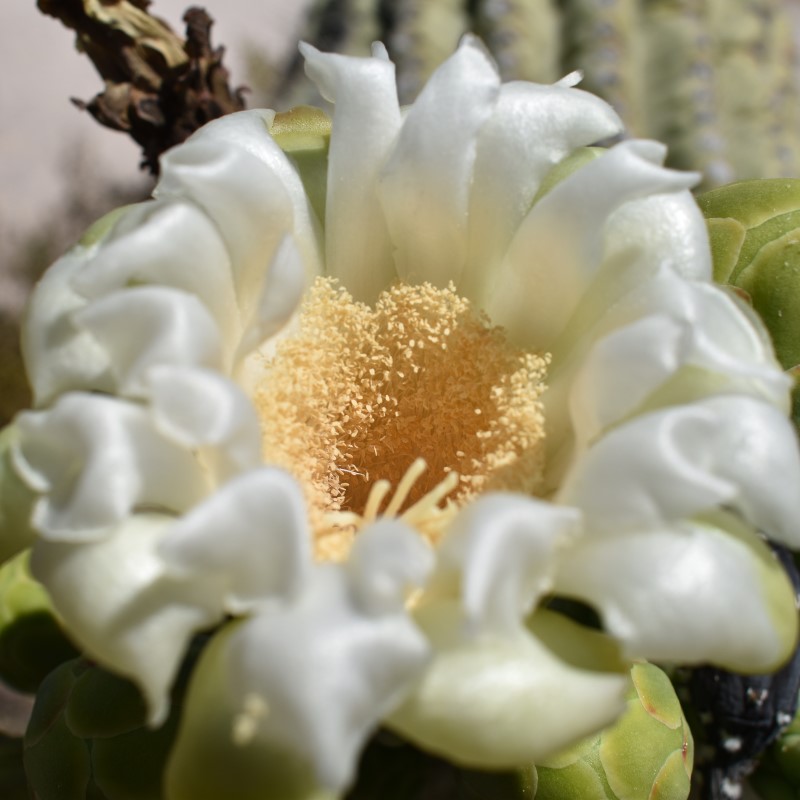
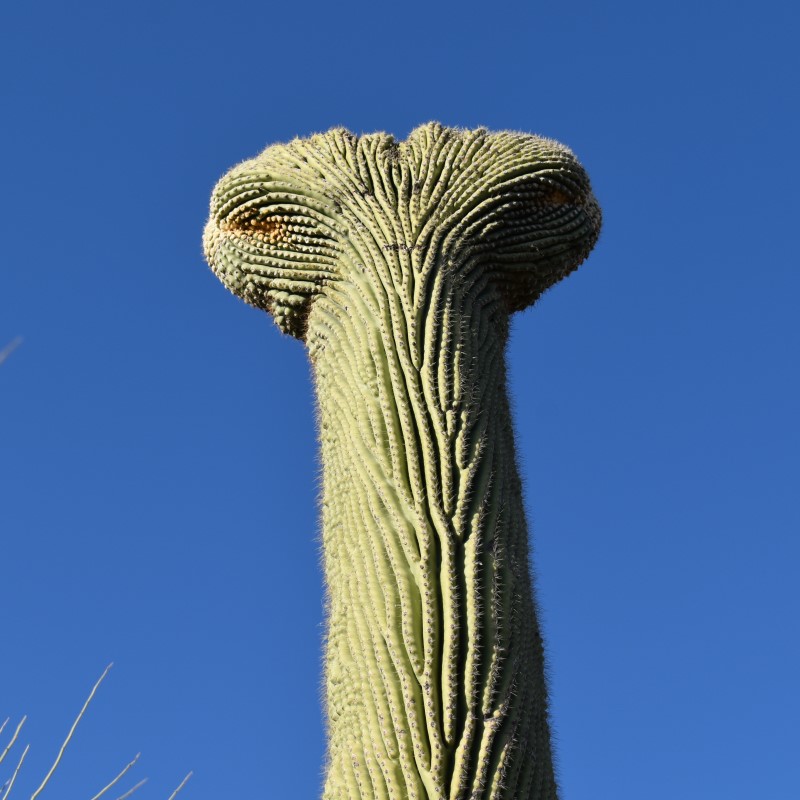
One other cool thing at Saguaro are petroglyphs. Almost every national park in the southwest has petroglyphs, but you can get much closer to those at Saguaro than at other parks.
Saguaro is divided into western and eastern districts. Unlike most other national parks, it has no campground, so I checked into a hotel in Tucson after visiting the western district and then went to visit the east. In the morning, the AllTrails app directed me to a nice quick desert hike in the western district not far from town.
Another one of the national parks that doesn’t have a campground is Petrified Forest, so I booked a stay at Lyman Lake State Park. The drive on U.S. Highway 60 brought plenty of excellent views, including Salt River Canyon. My campsite offered great views of the lake and also some interesting E-skip from the Upper Midwest!
The above DX recordings were made from Lyman Lake State Park, Arizona, on May 18, 2022 between 8:10 and 8:28 p.m. Arizona time. Stations include KYYY Bismarck ND, KIZZ Minot ND, KOYY Fargo ND, KTRF-FM Red Lake Falls MN, KBVB Barnesville MN, KFNW-FM Fargo ND, KOLY-FM Mobridge SD, CJVR-FM-1 Dafoe SK, and KQDJ-FM Valley City ND.
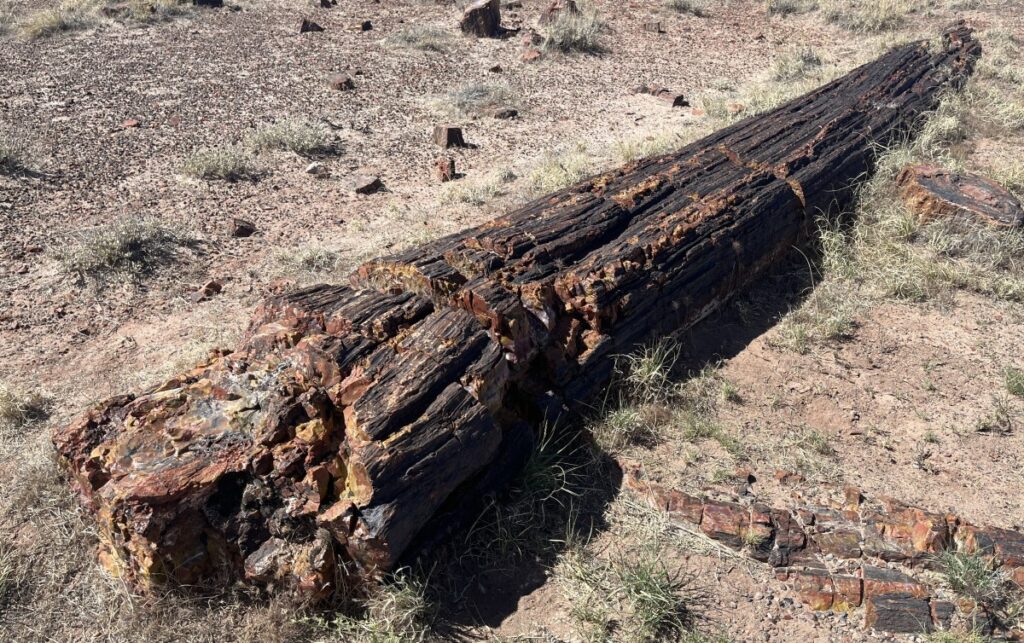
At Petrified Forest, there are plenty of opportunities to see the park’s namesake. I started with the Long Logs and Agate House trail, which was so stunning that I opted to double-back and repeat the loop in the opposite direction on my way back. The petrified logs along the trail look so much like real logs that I had to keep reminding myself that these weren’t just logs marking the edge of a trail like those back home!
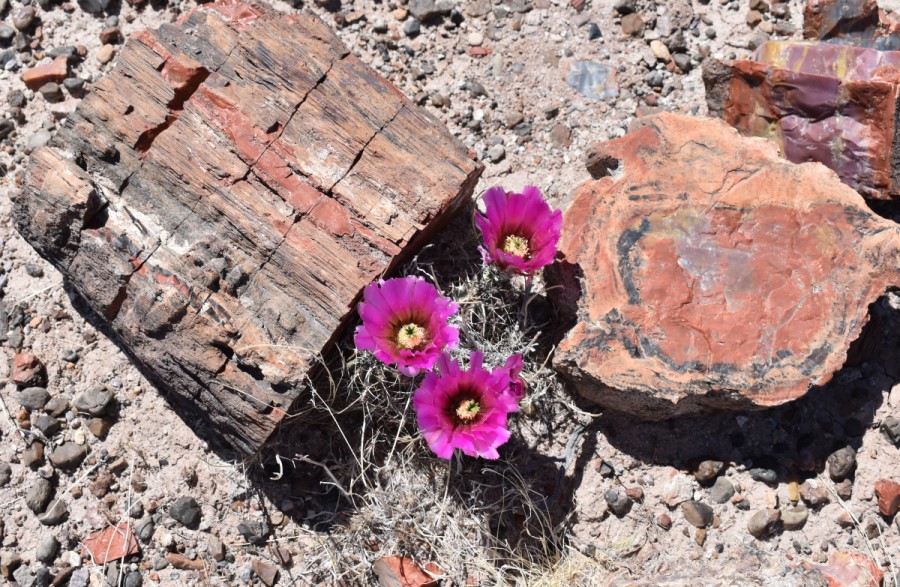
After visiting so many national parks, you begin to notice some overlaps. Petrified Forest also has a badlands area, petroglyphs, and an ancestral village similar to what I’d already seen at other parks, but they’re still interesting to visit. The northern end of the park also has some more recent pop culture history related to the old Route 66 and the Painted Desert Inn, which has been preserved to be the way it would have looked back in the 1940s or 50s.
It’s illegal to take rocks from the park, but the gift shops have neat piles of little plastic boxes full of broken up petrified rocks from outside the park for $7. Sure, I bought one, but once they’re broken up from their original form, they’re really just nice-looking rocks. You can also buy slabs that actually look like wood for much, much more.
Conveniently, the north end of the road through Petrified Forest is actually an interchange directly on I-40. After dinner at the visitor’s center, it was time to head home to think about future journeys!
So, the secrets to surviving desert camping? Plan your hikes for the morning, bring plenty of water and sunscreen, reassure yourself that it will get cool at night, and take an occasional break in a hotel!
Read more about my roadtrip adventures in previous Off Topic columns.

